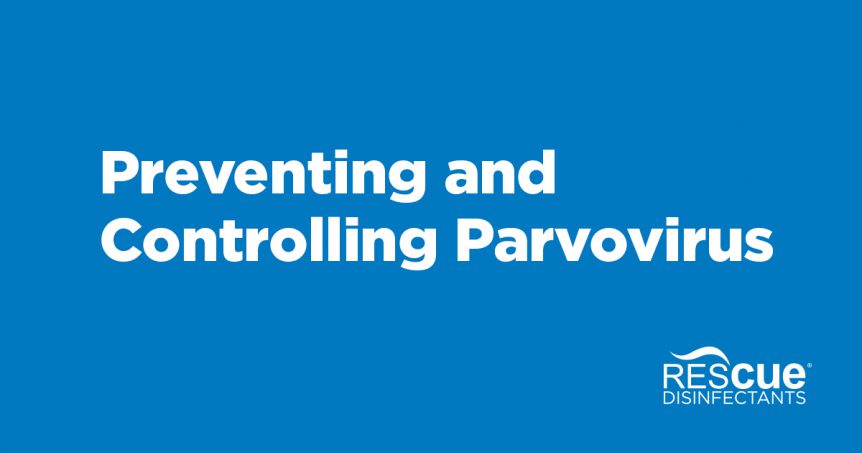Canine Parvovirus (CPV) or “Parvo” as it is commonly known usually attacks the canine intestinal track. It is highly infectious and can affect all dogs, but particularly unvaccinated dogs and puppies or young adults. While worrisome to a dog owner, Parvo cannot be transmitted for an infected dog to humans.
Virology
Canine Parvovirus is a non enveloped, single stranded DNA virus, resistant to many common detergents and disinfectants, as well as to changes in temperature and pH. Infectious CPV can persist indoors at room temperature for at least 2 months; outdoors, if protected from sunlight and desiccation, it can persist for many months and possibly years.
Clinical Manifestations
The incubation period can last from 3 to 12 days after exposure but usually occurs within 5 to 7 days of exposure. The clinical manifestations of CPV disease are somewhat variable, but generally take the form of severe vomiting and diarrhea. The diarrhea may or may not contain blood. Additionally, affected dogs often exhibit a lack of appetite, depression, and fever. It is important to note that many dogs may not show every clinical sign, but vomiting and diarrhea are the most common signs; vomiting usually begins first. Young puppies less than five months of age are often the most severely affected and the most difficult to treat.
Epidemiology of Transmission
Due to its stability, the virus is easily transmitted through the feces and vomit of infected dogs and puppies as well as the hair or feet of infected dogs. Direct contact between dogs is not required to spread the virus. Because it is so difficult to kill, the virus is easily transmitted by “fomites” such as the hands, clothing, or shoes of anyone who comes in contact with it. Dogs that become infected with the virus and show clinical signs will usually become ill within 7-10 days of the initial infection.
Basic Prevention
The best way to help prevent dogs from getting Parvo is to vaccinate them against the virus and keep them under control; dogs allowed to roam are more likely to come into contact with the virus.
Veterinary practices and shelters can prevent an outbreak by ensuring animals are vaccinated and carefully evaluating and monitoring all animals.
Prevention Measures
To limit environmental contamination and spread to other susceptible animals, dogs with confirmed or suspected Parvo must be handled with strict isolation procedures (e.g. isolation housing, gowning and gloving of personnel, frequent and thorough cleaning, footbaths, etc).
Environmental Control Measures
The stability of Canine Parvovirus in the environment makes it important to properly disinfect contaminated areas. This can be accomplished by cleaning food bowls, water bowls, and other contaminated items using a registered EPA or Health Canada disinfectant that carries a claim against Canine Parvovirus.
References:
- The Merck Veterinary Manual https://www.merckvetmanual.com/digestive-system/diseases-of-the-stomach-and-intestines-in-small-animals/canine-parvovirus?redirectid=125?ruleredirectid=30
- American Veterinary Medical Association (AVMA) https://www.avma.org/public/PetCare/Pages/canine-parvovirus.aspx
- Koret Shelter Medicine http://www.sheltermedicine.com/library/canine-parvovirus-cpv

